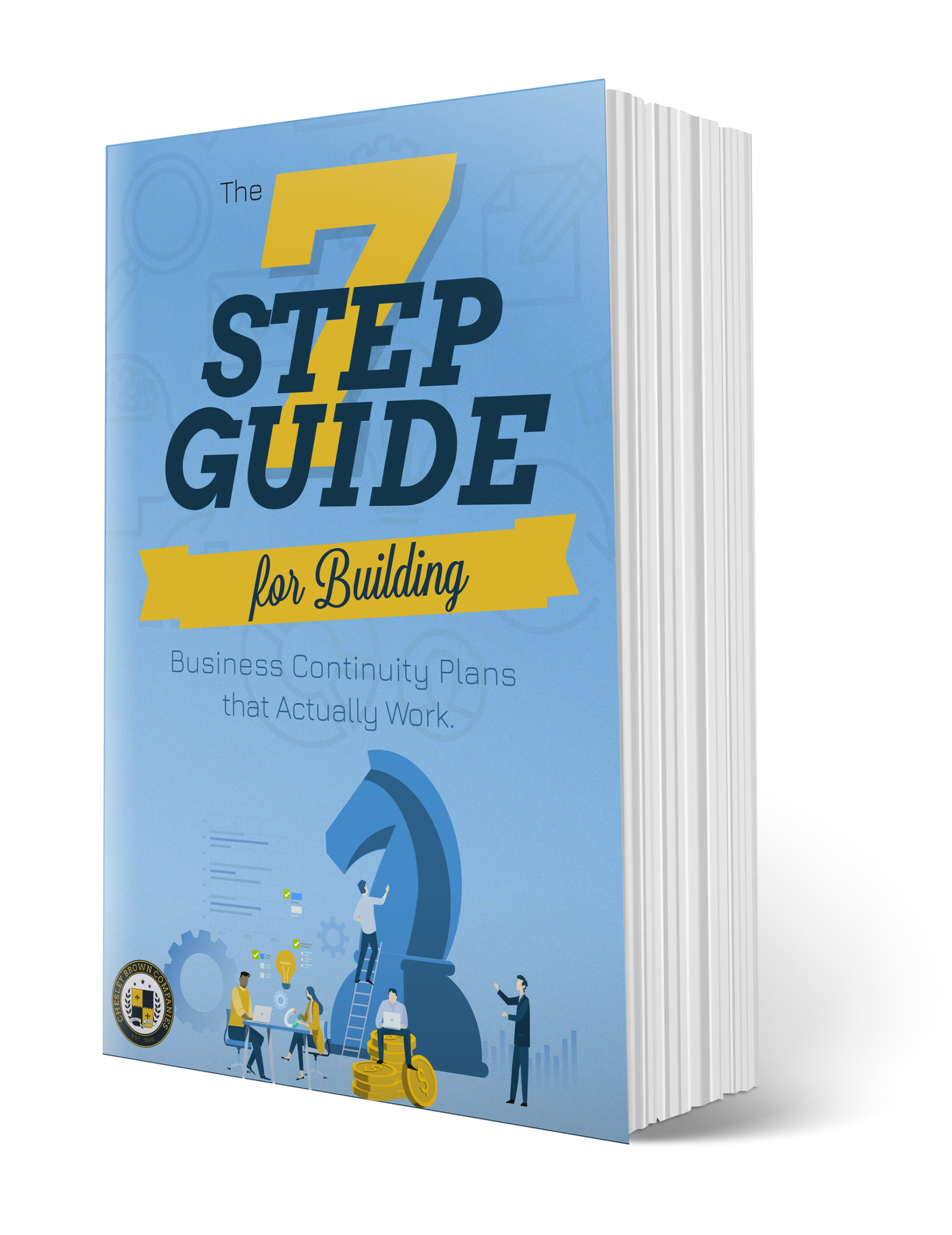At 8:11 a.m., the regional COO’s phone lit up with a text from a site manager: “There’s a crowd forming outside the Atlanta distribution center – looks like a protest.” By the time the security director refreshed the local news, video from the scene was already circulating on social platforms. Trucks were rerouting themselves through side streets. A customer posted, “Are orders delayed again?” The comms team had no statement ready because leadership hadn’t even been briefed.
Nothing catastrophic happened that morning, but the damage was done: three hours of lost throughput, a spike in customer service tickets, and a tense board call about “why we were the last to know.” For executives, that is the recurring nightmare. Not the event itself, but learning about it when it’s already a headline.
This is the gap Protective Intelligence aims to close. The idea is deceptively simple: give leaders time. Time to see what’s coming, to decide with confidence, and to act before the news cycle (or the market) decides for them.
Risk now moves at headline speed
The volume and velocity of external shocks have climbed. Supply chains remain vulnerable years after the pandemic-era wake-up call; boards often lack a deep understanding of those risks, and formal processes to discuss them are still uncommon, leaving companies exposed when volatility returns.
The broader risk landscape isn’t calming either. The World Economic Forum’s Global Risks Report 2025 highlights a fractured environment where geopolitical tension, social polarization, and technological disruption compound one another. For leaders, that means more incidents that begin as local signals and quickly scale into enterprise problems.
At the same time, public demonstrations remain frequent and fast-organizing across the United States. ACLED’s U.S. analyses document thousands of political violence and protest events, with recent mass demonstrations moving from online chatter to on-the-ground disruption in hours.
And when an incident spills into cyber or data exposure, costs escalate quickly. IBM’s 2024 report pegs the average global cost of a breach at $4.88 million, with higher figures in regulated sectors; sums that reflect not only remediation but also downtime and reputational harm. Faster identification and containment materially reduce those costs.
Taken together, the lesson is clear: speed of insight is now a business capability, not just a security aspiration.
Why traditional monitoring falls behind
Most organizations still rely on a patchwork: email tips from field teams, RSS feeds, vendor alerts, a few social media dashboards, and a daily briefing. Each input has value; together, they create noise. Teams miss weak signals because they’re busy triaging loud ones. Leaders receive information in fragments, out of order, and without context. Decisions slow down, or worse, arrive after the story hardens in public.
Deloitte’s research on crisis readiness calls this the gap between perceived preparedness and practical response: organizations often think they can handle a crisis until speed and ambiguity expose weaknesses in governance and information flow.
The fix isn’t “more feeds.” It’s coherence. A way to connect disparate signals, rank them by relevance to your footprint, and place them in front of the specific decision-makers who can do something about them.
Intelligence as a time machine
ATMOS treats time as the scarcest resource during emerging risk. It aggregates external data (open sources, local media, social signals, partnered networks) and fuses it with what your team already knows like your sites, routes, events, brand exposure and then presents a single, prioritized picture of what matters to you.
Think of it as moving from watching to knowing:
- Instead of “There’s chatter about protests somewhere,” you see where activity is building relative to your assets, what the likely timeline looks like, and who inside your organization needs to be on deck.
- Instead of a generic “severe weather” banner, your operations lead receives a targeted alert that names the sites within an impact cone, the shift windows at risk, and the vendor lanes that should be rerouted first.
When intelligence is contextual, minutes become hours. Hours you can invest in pre-positioning staff, adjusting routes, or briefing the board with a measured plan rather than a reactive apology.
A day in the life: from noise to action
A national retailer saw online chatter about coordinated cargo theft targeting a specific interstate corridor. Within ATMOS, that chatter didn’t appear as a vague alert. It mapped directly to the retailer’s scheduled high-value shipments, highlighted a 36-hour window of elevated risk, and notified the logistics leader with a recommended mitigation: stage an alternate cross-dock and swap drivers at pre-cleared lots. The company avoided an incident, and the board later asked a different question than usual: “How did we know this in time?”
Executives don’t need more data. They need context they can trust, delivered early enough to change outcomes.
The leadership shift: risk as an enterprise metric
In most companies, “security” is still treated as a cost center. But for the C-suite, risk is a performance variable; one that hits revenue, margin, and brand equity. The organizations that fare best are reframing intelligence as an anticipatory function:
- COOs use real-time signals to protect throughput and staffing plans rather than improvising around disruptions.
- General Counsel gains documented foresight that supports defensible decisions and narrows litigation exposure.
- Risk leaders translate raw signal into board-level language: probability, potential impact, and courses of action.
- CRE owners protect tenant experience and occupancy by staying ahead of neighborhood conditions that change foot traffic, perception, or safety posture.
McKinsey’s work on resilient operations underscores the board-level gap: few boards consistently engage supply-chain or disruption risk in a structured way. Closing that gap begins with intelligible, decision-ready insight, exactly the product an executive radar should deliver.
Inside ATMOS (briefly): from aggregation to action
We’re opinionated about one thing: alerts that don’t drive action are noise. ATMOS is built around three motions.
- Aggregation with purpose. Pull in open-source reporting, social signals, partner feeds, client intel, and historical patterns. Attach geospatial and asset context so a protest across town isn’t treated the same as one forming outside your flagship property.
- Analysis that blends machine and human. Use AI to cluster signals, spot outliers, and score relevance, then keep analysts in the loop to validate, de-duplicate, and frame the implications. (Automation gets you speed; judgment keeps you from over- or under-reacting.)
- Action that respects how executives actually work. Deliver a concise brief in one pane—what’s happening, why it matters to you, what we recommend, and who owns the next move. Archive the thread so Legal and Audit have a clean record of foresight and response.
The effect shows up in the business metrics that matter: fewer interruptions, shorter recovery windows, and cleaner narratives when stakeholders ask, “What did we know and when did we know it?”
The business case: time is money (and reputation)
Crises cost more when detected late. That is as true in physical operations as in cyber. IBM’s research demonstrates that faster identification and containment translate into materially lower breach costs; the same logic applies to public-facing incidents and operational disruptions. If you shrink the window from surprise to response, you narrow the blast radius.
Deloitte’s crisis work reaches a similar conclusion from a governance angle: organizations that practice, instrument, and measure crisis readiness outperform when uncertainty hits, not because they avoid every shock, but because their decision loop is faster and clearer.
On the macro front, the World Economic Forum’s risk outlook is a reminder that volatility is structural, not episodic. Leaders who treat early warning as a standing capability, not an ad-hoc dashboard, will spend less time explaining and more time operating.
Why this matters now
Markets are fragile to surprise. Global reports this year have warned about complacency and the risk of sharp corrections when narratives turn; while those analyses focus on finance, the management lesson generalizes: systems under stress punish slow reflexes. The same is true for brands, supply chains, and portfolios of property.
Meanwhile, the street, and the feed, moves faster than command centers built for yesterday’s cadence. ACLED’s U.S. series shows how demonstrations scale in hours, not days; McKinsey shows board processes still lag operational reality; IBM quantifies the penalty for late detection. Connecting those dots is the job.
Early warning isn’t a dashboard. It’s governance plus telemetry: who gets what signal, in what format, with what authority to act.
What good looks like (governance, not gadgets)
A practical early-warning program has four traits:
Clarity of ownership. Someone owns the risk picture end-to-end, from signal to decision to after-action learning. No split-brain between “security” and “the business.”
A living risk map. Your assets, routes, events, and stakeholders are mapped and maintained, so context never lags reality.
Decision templates. Pre-agreed plays for protests near properties, severe weather, violent incidents, activist campaigns, supply-chain blockages; so the first 30 minutes aren’t spent debating process.
Board-grade reporting. A concise weekly or monthly read that trends exposure, near-misses, and time-to-decision. McKinsey’s finding about board awareness isn’t a criticism; it’s an invitation to brief better.
ATMOS slots into that posture as the sensor-fusion and briefing layer. It won’t replace judgment, local relationships, or leadership. It will amplify them.
A closing thought for the C-suite
You can’t slow the news cycle. You can’t stop every disruption. But you can change when you learn and how you decide. In practice, that’s what separates organizations that ride out volatility from those that get defined by it.
See what others miss. Act before others react. That’s not a slogan; it’s a management discipline.
If you want to evaluate whether your current monitoring and decision workflow would keep pace with the next “quiet Monday,” we can help you pressure-test it against real scenarios and show where ATMOS would buy back time.
Sign up!
For industry-leading guides and analysis sign up for our blog below.
Latest News
The IoT Security Nightmare: Why Smart Buildings Are a Hacker’s Playground
Picture the Scene On a Tuesday morning in downtown Chicago, tenants in a new office tower swipe their badges at the glass entrance doors. Inside, the lobby lighting adjusts automatically to the growing crowd. Elevators,…
Read MoreWhy Rooftop Access Control Should Be Standard Practice at Outdoor Events
Lessons Unlearned, Countermeasures Unmeasured Written By: Max Briggs, Vice President, Chesley Brown International The first rule of open-air event security sounds simple: control what you can see, and see what you can’t control. In practice,…
Read MoreWhite-Collar Crime: How to Detect and Prevent Fraud in Your Business
Fraud rarely announces itself with flashing lights. It works quietly, exploiting gaps in oversight, trust, and accountability until the numbers no longer add up. In 2023, a regional finance firm learned this lesson the hard…
Read MoreFrom Ports to Warehouses: Securing the Supply Chain in 2025
Summary: The Human Side of a Global Problem It started with a call just before sunrise. A regional operations manager learned a high-value shipment never made it from the port to the warehouse. The truck…
Read MoreSpot the Signs: Preempting Workplace Violence Through Intelligence
Learn to recognize pre-threat behavioral indicators and prevent workplace violence with intelligence and proactive risk management strategies.
Read More






